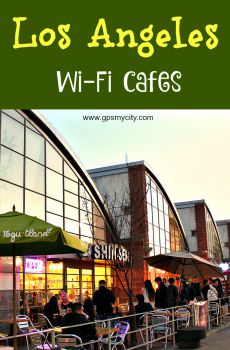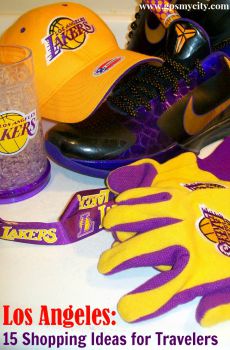El Pueblo and Little Tokyo Walk (Self Guided), Los Angeles
El Pueblo and Little Tokyo are two culturally rich and historically significant neighborhoods in Los Angeles.
The former is the oldest district in the city. Also known as the birthplace of Los Angeles, El Pueblo is centered around the Los Angeles Plaza. Throughout most of the 19th century, it was the city's administrative and commercial center: first under the Spanish (from 1781 to 1821), then the Mexican (from 1821 to 1847), and, finally, under the United States rule (after 1847).
Here, you'll find notable landmarks like the Avila Adobe, the oldest standing residence in Los Angeles, and Olvera Street, a vibrant marketplace with Mexican crafts and cuisine. The Old Plaza Firehouse and Pico House are other historic gems in the area, offering a glimpse into the city's past.
A short walk away, you'll discover LA Plaza de Cultura y Artes, a museum dedicated to Mexican American and Latino culture. The Merced Theater, an old-time entertainment venue and retail space, also adds a great deal to the neighborhood's charm.
Heading eastward, you'll enter Little Tokyo, a thriving Japanese-American community. The Japanese American National Museum is a must-visit, showcasing the history and contributions of Japanese Americans. The Japanese Village Plaza offers a taste of Japan with its shops and restaurants, similar to the renowned Sushi Gen Restaurant, located a few blocks away, where you can savor authentic sushi.
To those interested in Mexican or Japanese culture, El Pueblo and Little Tokyo offer a unique opportunity for cultural exchange and exploration. For a blend of history, art, and delicious food, embark on this self-guided journey. It will surely leave you with a deeper appreciation for the diverse tapestry of Los Angeles.
The former is the oldest district in the city. Also known as the birthplace of Los Angeles, El Pueblo is centered around the Los Angeles Plaza. Throughout most of the 19th century, it was the city's administrative and commercial center: first under the Spanish (from 1781 to 1821), then the Mexican (from 1821 to 1847), and, finally, under the United States rule (after 1847).
Here, you'll find notable landmarks like the Avila Adobe, the oldest standing residence in Los Angeles, and Olvera Street, a vibrant marketplace with Mexican crafts and cuisine. The Old Plaza Firehouse and Pico House are other historic gems in the area, offering a glimpse into the city's past.
A short walk away, you'll discover LA Plaza de Cultura y Artes, a museum dedicated to Mexican American and Latino culture. The Merced Theater, an old-time entertainment venue and retail space, also adds a great deal to the neighborhood's charm.
Heading eastward, you'll enter Little Tokyo, a thriving Japanese-American community. The Japanese American National Museum is a must-visit, showcasing the history and contributions of Japanese Americans. The Japanese Village Plaza offers a taste of Japan with its shops and restaurants, similar to the renowned Sushi Gen Restaurant, located a few blocks away, where you can savor authentic sushi.
To those interested in Mexican or Japanese culture, El Pueblo and Little Tokyo offer a unique opportunity for cultural exchange and exploration. For a blend of history, art, and delicious food, embark on this self-guided journey. It will surely leave you with a deeper appreciation for the diverse tapestry of Los Angeles.
How it works: Download the app "GPSmyCity: Walks in 1K+ Cities" from Apple App Store or Google Play Store to your mobile phone or tablet. The app turns your mobile device into a personal tour guide and its built-in GPS navigation functions guide you from one tour stop to next. The app works offline, so no data plan is needed when traveling abroad.
El Pueblo and Little Tokyo Walk Map
Guide Name: El Pueblo and Little Tokyo Walk
Guide Location: USA » Los Angeles (See other walking tours in Los Angeles)
Guide Type: Self-guided Walking Tour (Sightseeing)
# of Attractions: 10
Tour Duration: 2 Hour(s)
Travel Distance: 2.2 Km or 1.4 Miles
Author: ashley
Sight(s) Featured in This Guide:
Guide Location: USA » Los Angeles (See other walking tours in Los Angeles)
Guide Type: Self-guided Walking Tour (Sightseeing)
# of Attractions: 10
Tour Duration: 2 Hour(s)
Travel Distance: 2.2 Km or 1.4 Miles
Author: ashley
Sight(s) Featured in This Guide:
- Los Angeles Plaza
- Avila Adobe
- Olvera Street
- Old Plaza Firehouse
- Pico House
- LA Plaza de Cultura y Artes
- Merced Theater
- Japanese American National Museum
- Japanese Village Plaza
- Sushi Gen Restaurant
1) Los Angeles Plaza
Los Angeles Plaza is the central point of the Los Angeles Plaza Historic District and the birthplace of the city. Felipe de Neve, the Spanish Governor of the Californias who selected the site and laid out the town of Pueblo de Los Ángeles, wanted the plaza to be the geographical center for his newly founded town.
De Neve's plaza, as was originally known, was rectangular in form - 75 yard wide by 100 in length. Built in the 1820s, the plaza was the city's commercial and social center. It remains the site of many festivals and celebrations. The plaza has large statues of three important figures in the city's history: King Carlos III of Spain, the monarch who ordered the founding of the Pueblo de Los Ángeles in 1780; Felipe de Neve, the Spanish Governor of the Californias who selected the site of the Pueblo and laid out the town; and Junípero Serra, founder and first head of the Alta California missions.
In addition to this, the plaza is dedicated to commemorating the original forty-four settlers (Los Pobladores), and the four soldiers who accompanied them. A large plaque listing their names was erected in the plaza, and later plaques dedicated to the eleven individual families were placed in the ground encircling the gazebo in the center of the plaza.
The plaza has a family friendly atmosphere with a perpetual buzz about it. There’s color, culture, entertainment, and food. There’s always something happening here – to watch, to listen, to savour.
De Neve's plaza, as was originally known, was rectangular in form - 75 yard wide by 100 in length. Built in the 1820s, the plaza was the city's commercial and social center. It remains the site of many festivals and celebrations. The plaza has large statues of three important figures in the city's history: King Carlos III of Spain, the monarch who ordered the founding of the Pueblo de Los Ángeles in 1780; Felipe de Neve, the Spanish Governor of the Californias who selected the site of the Pueblo and laid out the town; and Junípero Serra, founder and first head of the Alta California missions.
In addition to this, the plaza is dedicated to commemorating the original forty-four settlers (Los Pobladores), and the four soldiers who accompanied them. A large plaque listing their names was erected in the plaza, and later plaques dedicated to the eleven individual families were placed in the ground encircling the gazebo in the center of the plaza.
The plaza has a family friendly atmosphere with a perpetual buzz about it. There’s color, culture, entertainment, and food. There’s always something happening here – to watch, to listen, to savour.
2) Avila Adobe
If you would like to know how the rich lived in Los Angeles in the 19th century, do visit the Ávila Adobe on Olvera Street. As the oldest residence still standing in Los Angeles, it is part of the El Pueblo de Los Angeles Historic Monuments. It was built in 1818 by Francisco Ávila, a wealthy cattle rancher, as a weekend and holiday home. He entertained friends here and traded his hides and tallow for fine furniture and the building’s wooden window and door frames.
The walls, built out of adobe bricks that had been sundried, are three feet thick. Once the floors were of hard-packed earth, but later varnished wooden planks were added. The ceilings are over 15ft high with cottonwood beams and the large rooms have many windows.
After Francisco Ávila’s death, his widow lived in the house until her death and it passed on to her children. Between 1868 and 1920 it was used as a restaurant and a bed and board. The area was a poor one and in 1926 the City Health Department decided to demolish the house. Luckily for history fans, an Englishwoman, Christine Sterling, who was interested in the city’s historical heritage, started a public campaign to save the building. Private donations flooded in from all around the city and the building was restored. The police department organized the prisoners of the county jail into work-groups and they cleaned up the surrounding plaza, turning it into a Mexican-style market-place.
Today only seven rooms remain of the original, larger house. They are open to the public as a house museum furnished as they would have been in Adobe’s time. You can see a four-poster bed, the family dining area, children’s ragdolls and, in the kitchen, an enormous washtub for bathing.
Why You Should Visit:
To see/imagine how life was back in the 19th century in this neighborhood, especially since most other houses have turned into shops/restaurants.
Tip:
The house/museum is free to the public and the public restroom is an added bonus.
You can see the whole place in 10 mins if you walk around, but take some time to also read the description on the wall.
The walls, built out of adobe bricks that had been sundried, are three feet thick. Once the floors were of hard-packed earth, but later varnished wooden planks were added. The ceilings are over 15ft high with cottonwood beams and the large rooms have many windows.
After Francisco Ávila’s death, his widow lived in the house until her death and it passed on to her children. Between 1868 and 1920 it was used as a restaurant and a bed and board. The area was a poor one and in 1926 the City Health Department decided to demolish the house. Luckily for history fans, an Englishwoman, Christine Sterling, who was interested in the city’s historical heritage, started a public campaign to save the building. Private donations flooded in from all around the city and the building was restored. The police department organized the prisoners of the county jail into work-groups and they cleaned up the surrounding plaza, turning it into a Mexican-style market-place.
Today only seven rooms remain of the original, larger house. They are open to the public as a house museum furnished as they would have been in Adobe’s time. You can see a four-poster bed, the family dining area, children’s ragdolls and, in the kitchen, an enormous washtub for bathing.
Why You Should Visit:
To see/imagine how life was back in the 19th century in this neighborhood, especially since most other houses have turned into shops/restaurants.
Tip:
The house/museum is free to the public and the public restroom is an added bonus.
You can see the whole place in 10 mins if you walk around, but take some time to also read the description on the wall.
3) Olvera Street (must see)
Olvera Street is a historic pedestrian street situated in El Pueblo de Los Ángeles, which is the historical center of Los Angeles. This street is located adjacent to the Plaza de Los Ángeles, which happens to be the oldest plaza in California. This plaza played a central role in the life of the city during the Spanish and Mexican periods, and even into the early American era, following the Conquest of California.
Olvera Street, also referred to as Calle Olvera or Placita Olvera, is a designated historic district in downtown Los Angeles and is a part of the El Pueblo de Los Angeles Historic Monument. Los Angeles was officially founded in 1781, and Olvera Street acquired its current name in 1877. Many of the historic buildings in the Plaza District can be found on Olvera Street, including some of the oldest monuments in Los Angeles, such as the Avila Adobe, which was constructed in 1818, the Pelanconi House from 1857, and the Sepulveda House built in 1887.
Olvera Street has even earned recognition as one of the "Top Five" streets in the "Great Streets of America" journal. The street is lined with restaurants, vendors, and public establishments, attracting nearly two million visitors each year. Additionally, there is a Visitors Center where tourists can watch a complimentary film depicting early life in Los Angeles.
Why You Should Visit:
If you want a taste of Mexico, this is the place to be.
Could be the closest thing to real Mexico one can experience!
Olvera Street, also referred to as Calle Olvera or Placita Olvera, is a designated historic district in downtown Los Angeles and is a part of the El Pueblo de Los Angeles Historic Monument. Los Angeles was officially founded in 1781, and Olvera Street acquired its current name in 1877. Many of the historic buildings in the Plaza District can be found on Olvera Street, including some of the oldest monuments in Los Angeles, such as the Avila Adobe, which was constructed in 1818, the Pelanconi House from 1857, and the Sepulveda House built in 1887.
Olvera Street has even earned recognition as one of the "Top Five" streets in the "Great Streets of America" journal. The street is lined with restaurants, vendors, and public establishments, attracting nearly two million visitors each year. Additionally, there is a Visitors Center where tourists can watch a complimentary film depicting early life in Los Angeles.
Why You Should Visit:
If you want a taste of Mexico, this is the place to be.
Could be the closest thing to real Mexico one can experience!
4) Old Plaza Firehouse
The Old Plaza Firehouse stands as the oldest fire station in the city of Los Angeles, having been constructed back in 1884. It's situated in close proximity to Olvera Street, within the Los Angeles Plaza Historic District, and holds the distinction of being designated as California Historical Landmark since April 8, 1960.
This historic building was designed by a local architect William A. Boring, who received $160.75 from the City for his architectural drawings. Erected in the year 1884, it served as an active firehouse until 1897. Subsequently, it underwent a series of diverse uses, including operating as a saloon, cigar store, poolroom, "seedy hotel," Chinese market, "flop house," and drugstore. However, in the 1950s, efforts were made to restore the building to its former glory, and it was officially reopened as a firefighting museum in 1960.
Visitors are welcome to explore the Plaza Firehouse Museum, which is accessible to the public from Tuesday to Sunday, between the hours of 10 am and 3 pm. Inside, the museum houses a collection of historical helmets, photographs, and firefighting equipment from the late 19th and early 20th centuries. Despite its modest size, the museum does not charge an admission fee, making it an engaging destination even for those with limited knowledge of firefighting history. It offers a captivating journey through the evolution of firefighting practices.
This historic building was designed by a local architect William A. Boring, who received $160.75 from the City for his architectural drawings. Erected in the year 1884, it served as an active firehouse until 1897. Subsequently, it underwent a series of diverse uses, including operating as a saloon, cigar store, poolroom, "seedy hotel," Chinese market, "flop house," and drugstore. However, in the 1950s, efforts were made to restore the building to its former glory, and it was officially reopened as a firefighting museum in 1960.
Visitors are welcome to explore the Plaza Firehouse Museum, which is accessible to the public from Tuesday to Sunday, between the hours of 10 am and 3 pm. Inside, the museum houses a collection of historical helmets, photographs, and firefighting equipment from the late 19th and early 20th centuries. Despite its modest size, the museum does not charge an admission fee, making it an engaging destination even for those with limited knowledge of firefighting history. It offers a captivating journey through the evolution of firefighting practices.
5) Pico House
Pico House, constructed in 1870 by Pio Pico, a prosperous businessman who served as the final Mexican Governor of Alta California, was a lavish hotel. It boasted modern amenities like indoor plumbing, gas-lit chandeliers, an impressive double staircase, delicate lace curtains, and even featured a French restaurant. This Italianate-style hotel had three stories and offered 33 rooms, making it the most opulent lodging establishment in Southern California at the time. Its grand opening was celebrated with great enthusiasm.
However, its prominence was short-lived. By 1876, the Southern Pacific Railroad had connected the city to the rest of the country, attracting an influx of new residents and businessmen. Pio Pico's financial difficulties led to him losing ownership of the hotel to the San Francisco Savings and Loan Company. The city's business center gradually shifted southward, and by 1900, Pico House had fallen into disrepair, serving as a simple lodging house.
Eventually, the El Pueblo de Los Ángeles Historical Monument acquired the building and undertook a comprehensive renovation and restoration project to return it to its former splendor. Today, Pico House stands as a magnificent landmark in El Pueblo, recognized as a California Historical Landmark. It continues to host special exhibits, events, and commercial activities, ensuring its legacy endures.
However, its prominence was short-lived. By 1876, the Southern Pacific Railroad had connected the city to the rest of the country, attracting an influx of new residents and businessmen. Pio Pico's financial difficulties led to him losing ownership of the hotel to the San Francisco Savings and Loan Company. The city's business center gradually shifted southward, and by 1900, Pico House had fallen into disrepair, serving as a simple lodging house.
Eventually, the El Pueblo de Los Ángeles Historical Monument acquired the building and undertook a comprehensive renovation and restoration project to return it to its former splendor. Today, Pico House stands as a magnificent landmark in El Pueblo, recognized as a California Historical Landmark. It continues to host special exhibits, events, and commercial activities, ensuring its legacy endures.
6) LA Plaza de Cultura y Artes
LA Plaza de Cultura y Artes, commonly known as LA Plaza, is a museum and cultural center in Los Angeles that focuses on Mexican-American heritage. It officially opened its doors in April 2011. The museum features interactive exhibits crafted by experience design expert Tali Krakowsky, including a recreation of a 1920s Main Street. Its primary mission is to share the rich history, cultures, values, and traditions of Mexicans, Mexican Americans, and all Latinos in the Los Angeles and Southern California region. LA Plaza offers a variety of programs, including exhibitions, educational initiatives, and public events.
Situated in close proximity to Olvera Street within the El Pueblo de Los Angeles Historic District, which is also known as El Pueblo, LA Plaza is adjacent to La Iglesia de Nuestra Señora Reina de los Angeles, also referred to as La Placita or Plaza Church. These structures date back to the 1880s and are among the oldest in the city, including the Vickrey-Brunswig Building and the Plaza House, both constructed in 1883.
LA Plaza serves as a hub for the collection and exhibition of art, artifacts, and historical records that celebrate the diverse heritage, contemporary influences, and future potential of Latinos throughout the Los Angeles region. The museum hosts captivating performances, engaging exhibits, and thought-provoking discussions year-round. LA Plaza's offerings encompass a wide array of programs in fields such as music, dance, cinema, visual arts, history, culinary arts, topical events, nature, and much more.
Situated in close proximity to Olvera Street within the El Pueblo de Los Angeles Historic District, which is also known as El Pueblo, LA Plaza is adjacent to La Iglesia de Nuestra Señora Reina de los Angeles, also referred to as La Placita or Plaza Church. These structures date back to the 1880s and are among the oldest in the city, including the Vickrey-Brunswig Building and the Plaza House, both constructed in 1883.
LA Plaza serves as a hub for the collection and exhibition of art, artifacts, and historical records that celebrate the diverse heritage, contemporary influences, and future potential of Latinos throughout the Los Angeles region. The museum hosts captivating performances, engaging exhibits, and thought-provoking discussions year-round. LA Plaza's offerings encompass a wide array of programs in fields such as music, dance, cinema, visual arts, history, culinary arts, topical events, nature, and much more.
7) Merced Theater
Built in 1870, Merced Theater is the oldest surviving theater building in Los Angeles. It was built by cabinetmaker, William Abbot, who named the theater after his wife, Merced Garcia. William Abbot's parents came from Switzerland and Abbot married Maria Merced Garcia who grew up in El Pueblo de Los Angeles. Merced Theater is built in a brick Victorian Italianate style. Merced Theater was designed by Ezra F. Kysor who also designed the Pico House next door. On the first floor, it housed the Abbott's furniture store, the theater was on the second floor and Abbott's family's living space was on the top floor.
Merced Theater offered live theater from January 30, 1871 to 1876 - it was the center of Los Angeles theatrical activity during that period. When the Woods Opera House opened nearby in 1876, and there was an outbreak of smallpox in Merced Theater and Merced ceased being the city's leading theater. The Merced closed in 1877 and was used for informal entertainment events.
Today Merced Theater stands quietly in the center of Los Angeles Historic Park reminding visitors the past glory it once had. Merced Theater was designated a California Historic Landmark on March 6, 1935.
Merced Theater offered live theater from January 30, 1871 to 1876 - it was the center of Los Angeles theatrical activity during that period. When the Woods Opera House opened nearby in 1876, and there was an outbreak of smallpox in Merced Theater and Merced ceased being the city's leading theater. The Merced closed in 1877 and was used for informal entertainment events.
Today Merced Theater stands quietly in the center of Los Angeles Historic Park reminding visitors the past glory it once had. Merced Theater was designated a California Historic Landmark on March 6, 1935.
8) Japanese American National Museum
The Japanese American National Museum is situated in Los Angeles and is dedicated to preserving the history and culture of Japanese Americans. It was established in 1992 and can be found in the Little Tokyo neighborhood near downtown Los Angeles. The museum is affiliated with the Smithsonian Affiliations program.
This museum covers a span of over 130 years of Japanese American history, tracing back to the first generation of Japanese immigrants known as Issei. Within its collection, there are more than 100,000 feet (equivalent to 30,000 meters) of 16 millimeters and 8 millimeters home movies created by and featuring Japanese Americans from the 1920s to the 1950s.
Additionally, it houses a diverse array of artifacts, textiles, artworks, photographs, and oral histories that relate to Japanese Americans. Notably, the Japanese American National Museum of Los Angeles collaborates with the Academy Film Archive to safeguard and provide access to home movies that document the Japanese American experience. Since its establishment in 1992, the JANM Collection at the Academy Film Archive has grown to encompass over 250 home movies.
The museum has three ongoing exhibitions: "Interactive StoryFile of Lawson Iichiro Sakai" where he answers a thousand questions about himself, "Common Ground: The Heart of Community" covering 130 years of Japanese American history, and "Wakaji Matsumoto: An Artist in Two Worlds," showcasing photos of the Japanese American community in Los Angeles and pre-atomic Hiroshima.
This museum covers a span of over 130 years of Japanese American history, tracing back to the first generation of Japanese immigrants known as Issei. Within its collection, there are more than 100,000 feet (equivalent to 30,000 meters) of 16 millimeters and 8 millimeters home movies created by and featuring Japanese Americans from the 1920s to the 1950s.
Additionally, it houses a diverse array of artifacts, textiles, artworks, photographs, and oral histories that relate to Japanese Americans. Notably, the Japanese American National Museum of Los Angeles collaborates with the Academy Film Archive to safeguard and provide access to home movies that document the Japanese American experience. Since its establishment in 1992, the JANM Collection at the Academy Film Archive has grown to encompass over 250 home movies.
The museum has three ongoing exhibitions: "Interactive StoryFile of Lawson Iichiro Sakai" where he answers a thousand questions about himself, "Common Ground: The Heart of Community" covering 130 years of Japanese American history, and "Wakaji Matsumoto: An Artist in Two Worlds," showcasing photos of the Japanese American community in Los Angeles and pre-atomic Hiroshima.
9) Japanese Village Plaza
Located in the heart of Los Angeles, there's a hidden treasure that can transport you to the lively streets of Japan. Welcome to the Japanese Village Plaza, a cultural haven that provides an intriguing glimpse into Japanese traditions, cuisine, and shopping.
Whether you're an enthusiast of Japanese culture, a curious traveler, or a local seeking a distinctive experience, this is a must-visit destination that guarantees an immersion into the beauty and depth of Japanese heritage.
Originally founded in the 1970s, the Plaza served as a bustling center for the Japanese-American community. Over the years, it has transformed into a location showcasing a broader array of shops and dining establishments, all while retaining its unique charm.
The architectural features immediately transport you to the streets of Japan, with imported Sanshu blue tiles and red paper lanterns creating an authentic ambiance. The traditional yaruga, or fire tower, contributes to the genuine atmosphere, making you feel as though you are strolling through a Japanese village market.
No trip to Japanese Village Plaza would be complete without indulging in the genuine flavors of Japanese cuisine. From delectable ramen eateries to sushi bars and impressive teppanyaki grills, there is something to satiate every palate, so be sure to arrive with an appetite.
For those with a sweet tooth, Yamazaki Bakery offers a plethora of treats and baked goods to satisfy your cravings. Additionally, don't miss out on sampling the freshly made Mochi – a delightful confection consisting of small balls of ice cream encased in chewy rice cake.
Whether you're an enthusiast of Japanese culture, a curious traveler, or a local seeking a distinctive experience, this is a must-visit destination that guarantees an immersion into the beauty and depth of Japanese heritage.
Originally founded in the 1970s, the Plaza served as a bustling center for the Japanese-American community. Over the years, it has transformed into a location showcasing a broader array of shops and dining establishments, all while retaining its unique charm.
The architectural features immediately transport you to the streets of Japan, with imported Sanshu blue tiles and red paper lanterns creating an authentic ambiance. The traditional yaruga, or fire tower, contributes to the genuine atmosphere, making you feel as though you are strolling through a Japanese village market.
No trip to Japanese Village Plaza would be complete without indulging in the genuine flavors of Japanese cuisine. From delectable ramen eateries to sushi bars and impressive teppanyaki grills, there is something to satiate every palate, so be sure to arrive with an appetite.
For those with a sweet tooth, Yamazaki Bakery offers a plethora of treats and baked goods to satisfy your cravings. Additionally, don't miss out on sampling the freshly made Mochi – a delightful confection consisting of small balls of ice cream encased in chewy rice cake.
10) Sushi Gen Restaurant
Located in Little Tokyo's Downtown area since 1980, Sushi Gen has become a beloved spot for sushi enthusiasts in Los Angeles. It's situated in the Honda Plaza and specializes in serving traditional Japanese cuisine. The restaurant has a modern and relaxed atmosphere, with a sushi bar where you can observe skilled chefs preparing your food.
For starters, you can choose from options like steamed eggs, monkfish liver, or a special dish featuring giant clams. As for the main course, you'll find a variety of delicious options, including sautéed sole, chicken teriyaki, or a uni dinner that will surely please your palate. The menu also offers a wide range of sushi rolls, sashimi, maki, tekka-don, tempura dishes, and combination platters.
Sushi Gen is open for both lunch and dinner services, and they happily accept reservations, making it a great choice for a special date night. Additionally, they provide take-out services for those who prefer to enjoy their meals in the comfort of their own home.
For starters, you can choose from options like steamed eggs, monkfish liver, or a special dish featuring giant clams. As for the main course, you'll find a variety of delicious options, including sautéed sole, chicken teriyaki, or a uni dinner that will surely please your palate. The menu also offers a wide range of sushi rolls, sashimi, maki, tekka-don, tempura dishes, and combination platters.
Sushi Gen is open for both lunch and dinner services, and they happily accept reservations, making it a great choice for a special date night. Additionally, they provide take-out services for those who prefer to enjoy their meals in the comfort of their own home.
Walking Tours in Los Angeles, California
Create Your Own Walk in Los Angeles
Creating your own self-guided walk in Los Angeles is easy and fun. Choose the city attractions that you want to see and a walk route map will be created just for you. You can even set your hotel as the start point of the walk.
Movie Studios Tour
The film studios of Los Angeles, collectively known as the “dream factory”, are indeed factories. Here, countless iconic films and television shows have been produced over the years, creating stars and attracting great movie-makers from around the globe. Let's take a brief look at some of these vital hubs in the entertainment industry.
Raleigh Studios is one of the oldest continuously... view more
Tour Duration: 2 Hour(s)
Travel Distance: 3.9 Km or 2.4 Miles
Raleigh Studios is one of the oldest continuously... view more
Tour Duration: 2 Hour(s)
Travel Distance: 3.9 Km or 2.4 Miles
Downtown Architecture Walking Tour
For different people, Los Angeles means different things. One such is undoubtedly architecture. Being one of the centers of the Art Deco movement, LA features a great number of amazing historic houses and buildings attributed to this and other, older and more modern styles.
One prominent landmark is the Cathedral of Our Lady of the Angels, a contemporary construction masterpiece with its... view more
Tour Duration: 2 Hour(s)
Travel Distance: 2.6 Km or 1.6 Miles
One prominent landmark is the Cathedral of Our Lady of the Angels, a contemporary construction masterpiece with its... view more
Tour Duration: 2 Hour(s)
Travel Distance: 2.6 Km or 1.6 Miles
Los Angeles Downtown Walking Tour
The history of Los Angeles – "a bright and guilty place," as Orson Welles described it – began on September 4, 1781, when a group of 44 Spanish settlers established a hamlet on the territory of present-day Downtown LA which they called “The Town of Our Lady the Queen of the Angels” (El Pueblo de Nuestra Señora la Reina de los Ángeles).
The land became part of Mexico in 1821,... view more
Tour Duration: 2 Hour(s)
Travel Distance: 3.5 Km or 2.2 Miles
The land became part of Mexico in 1821,... view more
Tour Duration: 2 Hour(s)
Travel Distance: 3.5 Km or 2.2 Miles
Chinatown Walking Tour
Unlike other cities where Chinese immigrant neighborhoods were formed organically, the Los Angeles Chinatown is the only planned Chinatown in the US. A blend of Chinese and American architecture, it was developed in downtown LA, as a tourist attraction, in the 1930s.
Designed by Hollywood artists as a "Chinese" movie prop to create an exotic atmosphere, LA's Chinatown gives out... view more
Tour Duration: 1 Hour(s)
Travel Distance: 1.7 Km or 1.1 Miles
Designed by Hollywood artists as a "Chinese" movie prop to create an exotic atmosphere, LA's Chinatown gives out... view more
Tour Duration: 1 Hour(s)
Travel Distance: 1.7 Km or 1.1 Miles
Arts District Walking Tour
The Arts District is one of the hottest neighborhoods in downtown LA, located between Little Tokyo at Alameda to the west and the railroad yards and Los Angeles River to the east. Formerly an industrial area of warehouses and factories, it has been home to art studios and galleries since the 1970s. Having undergone another downturn in the 1990s, the area was officially renamed the “Arts... view more
Tour Duration: 2 Hour(s)
Travel Distance: 2.8 Km or 1.7 Miles
Tour Duration: 2 Hour(s)
Travel Distance: 2.8 Km or 1.7 Miles
Beverly Hills Walking Tour
Undeniably one of the most famous places in the world, Beverly Hills is widely known as the most fashionable destination in Los Angeles county to shop and have fun at. Originally a Mexican ranch where lima beans were once grown, this place has long been a home to many Hollywood stars and other celebrities, luxurious hotels, and high-end boutiques.
Beverly Hills started to gain prominence in the... view more
Tour Duration: 2 Hour(s)
Travel Distance: 2.7 Km or 1.7 Miles
Beverly Hills started to gain prominence in the... view more
Tour Duration: 2 Hour(s)
Travel Distance: 2.7 Km or 1.7 Miles
Useful Travel Guides for Planning Your Trip
9 Amazing Food to Try in Los Angeles (LA)
I love food. You love food too. And because we’re foodies, we want every meal to be as good as if it were our last. So for those few times us foodies sit at a table and unexpectedly strike gold, we must remember, honor and share that memorable meal. Here is a list of affordable LA area culinary...
11 Charming Cafes with Fast and Free Wifi in Los Angeles
Need to find free wireless connection AND a great cup of coffee? These charming cafes, hot-spots and writers’ hang-outs are scattered across LA but catalogued by neighborhood. These indie cafes cater to screenwriters, students and tourists who want to set up camp with their laptops for a few hours...
Los Angeles: 15 Souvenir Shopping Tips and Ideas for Travelers
With some many celebrities per square mile, living or just visiting, practically any stone in LA could pass for a souvenir that one time or another was touched, held or walked upon by some of the movie or rock stars, or was filmed in one of the many movies shot in the City of Angels for almost a...
The Most Popular Cities
/ view all
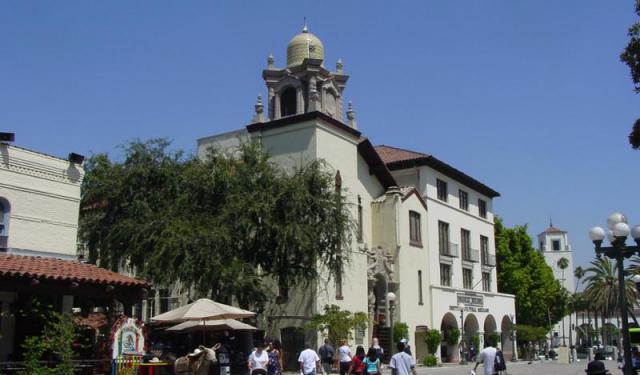


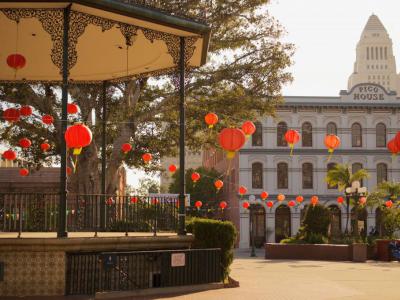
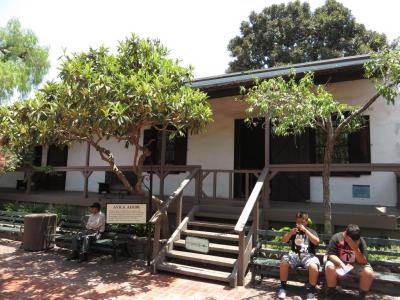
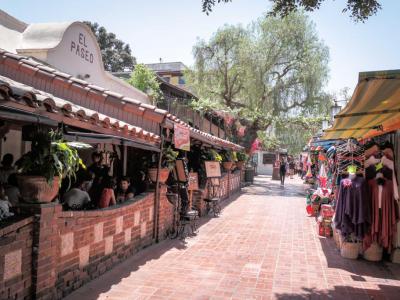
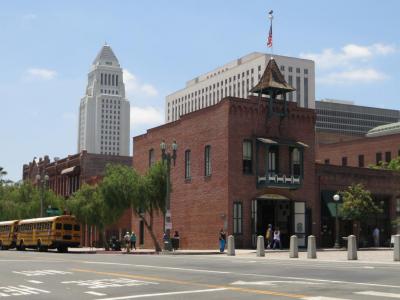
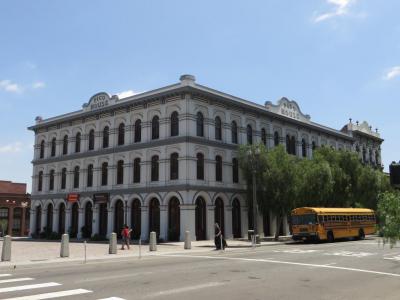
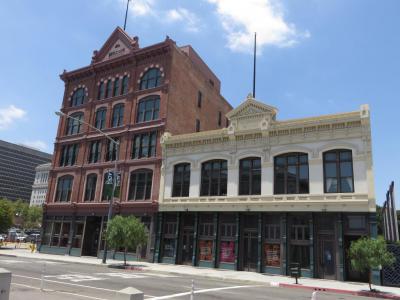
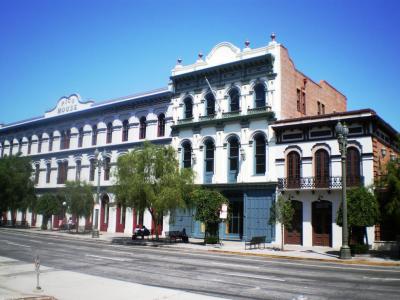
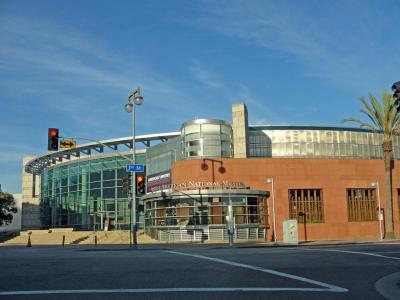
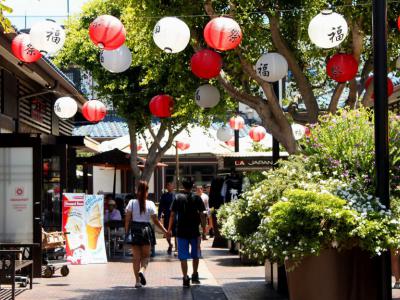
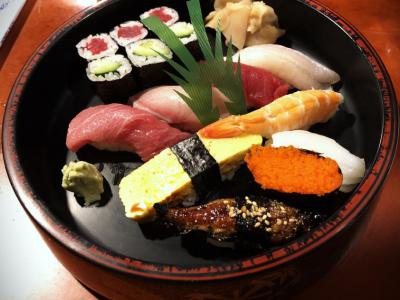

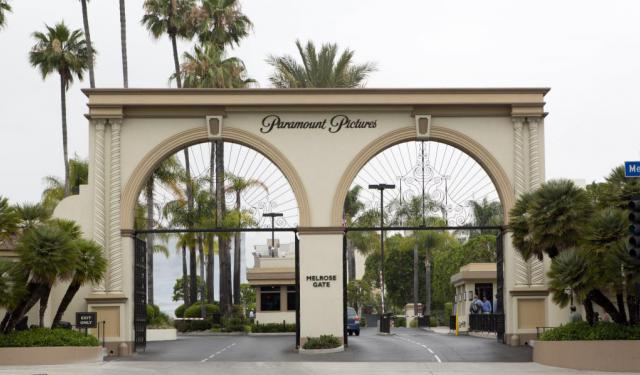
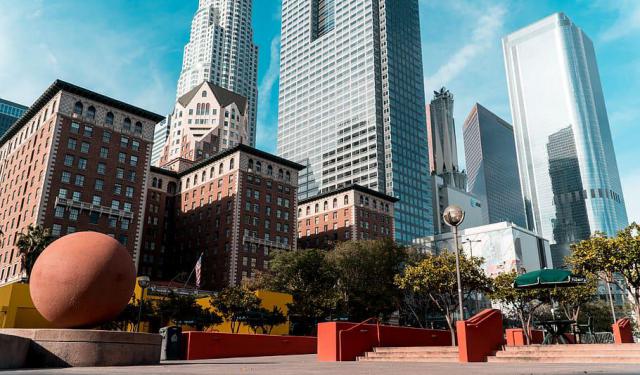
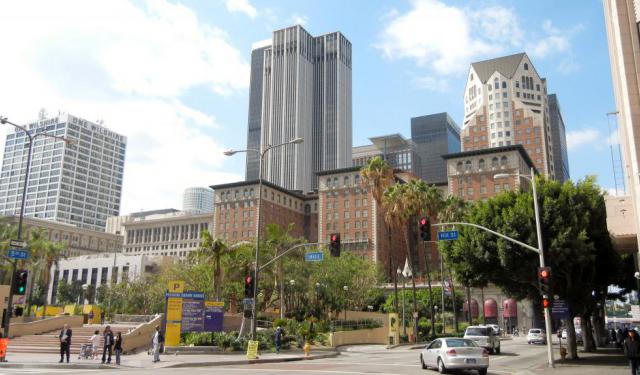
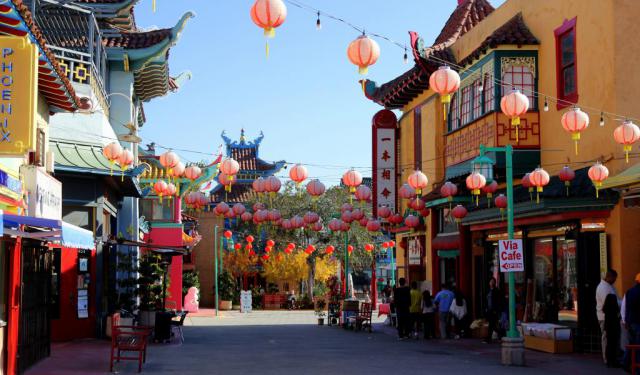
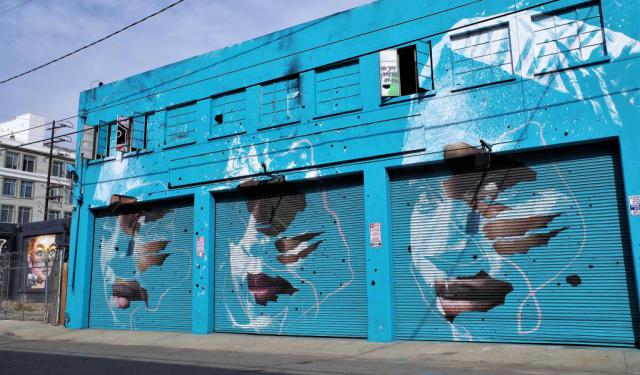
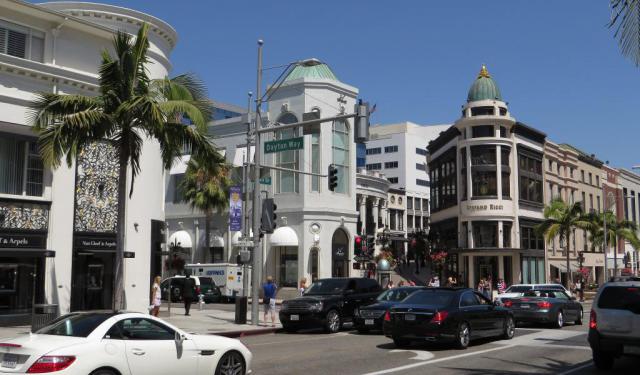
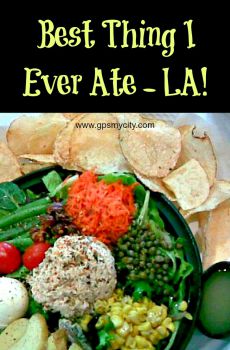.jpg)
